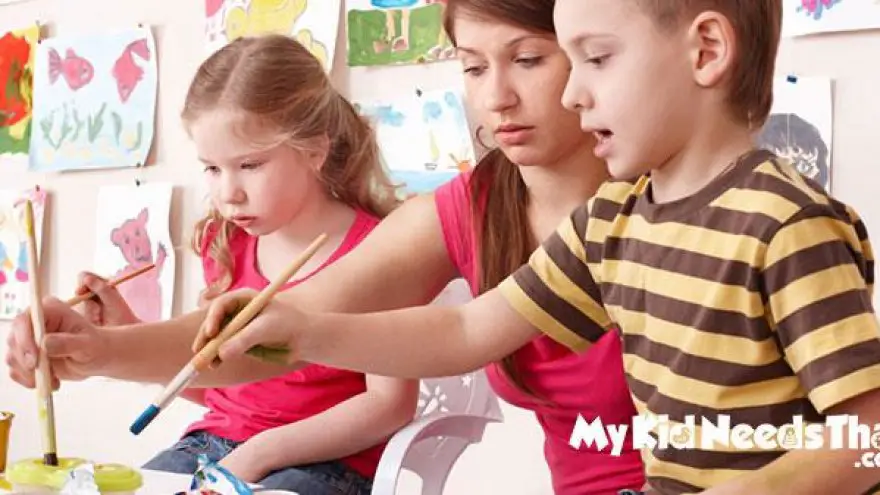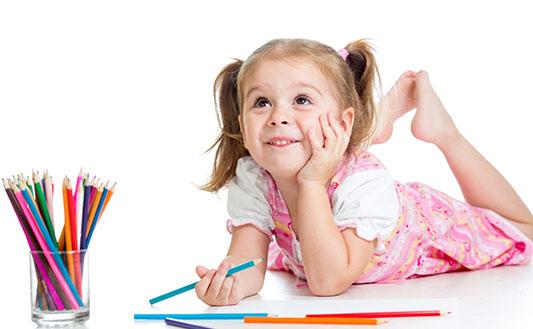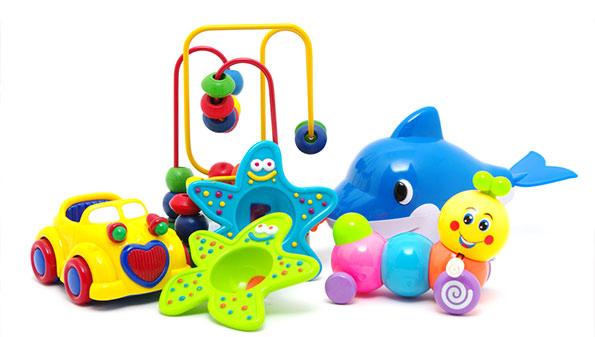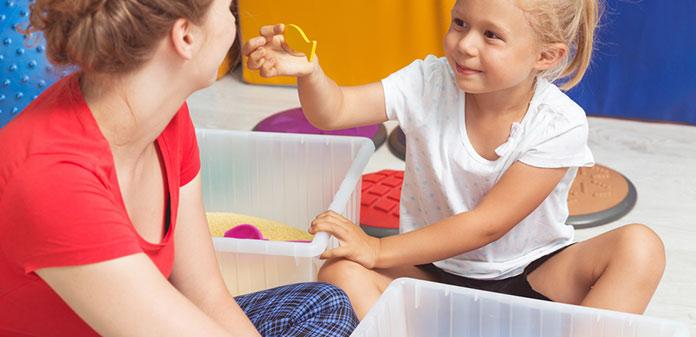10 Tips to Help Blossom Your Child’s Creativity

Many parents believe that some children are born as more creative than others in pretty much the same way as some children are naturally more intelligent than other kids. However, research shows that creativity is more of a skill that can be learned and mastered especially if Mom and Dad will be helping foster their child’s creativity.
Creativity is something that is not only important for the development of children’s musical and artistic expression. Creativity is also essential in the development of math and science skills as well as social skills and emotional intelligence. Creative people are known to be excellent problem solvers as they exhibit a wide range of flexibility in their approach to different situation and problems.
If you are looking for tips on how you can help blossom your child’s creativity, then you’ve come to the right place. Here are 10 tips that we are sure will help you become more successful in helping your kids be as creative as they can be.
 10 Great Tips To Skyrocket Creativity For Your Child:
10 Great Tips To Skyrocket Creativity For Your Child:
Provide Children with All the Resources They Will Need to Express Their Creativity
It is very important to provide kids with all the resources that they need to express their creativity. One of the most essential requisite is time. This simply means that you have to make sure they have plenty of time to do the things that they have in their minds as well as the things that they want to do. This often entails giving them unstructured time for them to complete their creative activities. There should be no distractions as well as unnecessary adult supervision.
While it is understandable that you will be looking after their safety, if you are going to be hovering over them like a hawk, their creativity might be hindered and not be allowed to progress. If it is safety that you are concerned about, then you need to provide a place or a play area where your kids can safely play without necessarily impeding their creative expression.
 If You Have to Give Your Kids Toys, Keep it Simple
If You Have to Give Your Kids Toys, Keep it Simple
One of the most often debated issues today is how toy manufacturers and so-called toy enthusiasts are killing children’s creativity because of pre-fabricated toys and playthings.
Before, children use a long piece of slender wood to pretend that it is the lightsaber of Luke Skywalker or even the double-bladed saber of Darth Sith. Today, many children no longer have to use their imagination that vividly simply because there are now toys that are designed to be as real as the copied object itself. This is the lament of many child development psychologists. They say that many of today’s highly advanced toys have clearly maimed the creativity of young children especially their ability to use their wild imaginations to see things that adults don’t see.
For us, a stick is a stick. But for kids, a stick can be the magic wand of Harry Potter, the trident of Neptune, or even the staff of Jack Frost. That is why if you really want to stimulate creativity in children, give them toys that are simple enough to allow kids to use their imaginations however they want to use it.
 Encourage Kids to Process as Much Information with Their Senses
Encourage Kids to Process as Much Information with Their Senses
Creativity requires the use of one’s different senses. It is therefore, important for children to harness the sensitivity and power of their sense organs – the eyes, their nose, their taste buds, their ears, and their tactile organs – to process a variety of sensory information. This helps the brain formulate newer and more novel constructs needed for the expression of one’s creativity.
It’s quite simple. How can you expect to create something if the materials your brain is going to work with is essentially limited? For example, if kids only know the colors red, blue, and yellow then their creativity will be limited only to these three colors. Add the secondary colors and the creative potential also grows. Add textures, shapes, lights, odors or scents, and perhaps even tastes and the creative potential of any child can grow exponentially.
So, it is important to expose your child to his or her environment as early as feasible. This allows his or her brain to gather as much information about the different things that is surrounding the child. These pieces of information are what the brain uses as building blocks or building pieces in the creative process.
Foster an Atmosphere of Creativity Right in Your Own Home
Just like the need for creating a stimulating and safe environment for babies, it is equally important to foster an atmosphere of creativity. Children learn best when they see Mom and Dad doing the same things that children love doing. Adorn your house with creative materials like paintings, photographs, architectural pieces, and sculpture as well as other forms of art expressions. If you have musical instruments, let them have theirs, too.
It is equally important to encourage kids to speak out their ideas no matter how absurd it may sound. Always resist the temptation of correcting or even evaluating the ideas of your children. You have to remember to value their ideas in pretty much the same way that you would want your friends to value your opinion.
Provide opportunities for you to share with your kids that it’s okay to make mistakes as no human is ever perfect. It is equally important to share your own experiences with failures and how you just laughed at your own mistakes. This helps kids to really let out their creativity simply because they have learned not to fear failures or mistakes. When kids are afraid to fail, they will no longer be motivated to think creatively because, at the back of their minds, their ideas will only fail.
Give Kids the Freedom to Explore Their Ideas
Part of fostering an atmosphere of creativity is allowing kids to really explore their ideas. This often means resisting the urge to direct them what they can and cannot think. Urging them to color, for example, a piece of drawing but only within the lines or borders of the drawing can significantly impair the flow of creativity. It is okay for them to color beyond the lines especially if this is what the mind is telling them to do.
In one particular study, it was revealed that showing kids how to put together or build a certain model can already reduce their creativity as their brain no longer needs to work to figure out how to put the different pieces together. This is also why there are certain building toys that don’t come with specific instructions as free play is more desirable to directed play. Giving children pieces of building bricks gives them infinite ways of thinking.
Give Kids the Autonomy to Do What They Want, but in a Safe Way
Just like allowing kids to explore their ideas in their own terms, giving them the autonomy to do what they want is also essential in fostering creativity. Like we have already said, giving them a box full of building bricks is a lot more beneficial in stimulating their creativity than giving kids building toys with detailed instructions on how to build the model. The instructions, while these may help children enhance their language skills, do little in stimulating creativity as the brain will simply have to process the visual information provided in the instructions. This, of course, can help with other developmental tasks but not necessarily creativity.
Encourage Kids to Participate in the Arts and to Read for Pleasure
One way to strengthen your child’s creativity is by encouraging them to actively participate in the arts or even to enjoy reading for pleasure. Just like in enhancing sensory processing, widening your kid’s exposure to the arts, literature, and other forms of creative expression can help the brain process more information which can be mixed to come up with an entirely new concept.
For example, encouraging them to read their favorite storybook can help develop both language skills and creativity. The situations and/or scenarios in the storybook can provide them with an idea on how they can expand these concepts and integrate into their own playtime activities. They can also role-play what they have read. This can help them act out the different situations in the storybook according to how they understood it and not on how you understand it. Remember, it is your kid’s creativity that you are trying to develop; not your own.
Stimulate Your Kids’ Ability to Use Divergent Thinking
Kids who are divergent thinkers are great at solving problems in many different ways. They can look at a particular situation from different angles. For divergent thinkers, there is more than one solution to a particular problem. The diversity of the potential solutions simply means that kids will have to “create” as many solutions as they possibly can.
Studies show that toys that allow for the development of divergent problem-solving skills have the greatest chance of helping kids to be more creative than those who are limited to using only convergent problem-solving skills. In fact, child development experts, particularly cognitive development specialists, point out that divergent thinking is creative thinking. The ability to look at a problem from different perspectives or viewpoints allows children to create different solutions. Convergent thinkers, on the other hand, operate on a one-to-one relationship; for convergent thinkers, a problem only has one solution.
To stimulate divergent thinking in your kids, you can give them situations wherein they can easily find a particular solution. Once they have successfully accomplished solving the problem, ask them to look for another way to solve the same problem. If they are again successful, then you ask them to again think of another way of arriving at the same solution. Simply put, there may only be one solution but the manner in which the solution is achieved can be done in different ways.
Actually, we do this all the time. For example, you want to go to Florida and you live in California. The solution is to ride a vehicle. However, the mode of transportation can be quite varied. You can fly on an airplane, take a bus, ride a car, or even ride in a train. In like manner, kids learn that there are different ways to solve a particular problem. And this can greatly aid in the development of their creativity.
Emphasize the Creative Process; Not the Creative Product
It is natural for us to reward our kids especially if they have accomplished something. We always believed that by rewarding children for their creative accomplishments, this will help them persevere and be even more creative. For a lot of us, rewards are like the fuel for our kids’ creative endeavors.
Unfortunately, child development experts say that this is actually counterproductive especially if your goal is to develop creativity in children. If we have to provide positive reinforcement, it should be directed towards the creative process and not the final product. Emphasizing the value of the product rather than the process can severely limit the creativity of children. Why? Because their motivation is on the accomplishment of the task. They know that if they finish the task, then they will be rewarded.
But, if we are to offer words of encouragement, support, or even praise, while kids are doing their tasks, we are emphasizing the process of creating something. We can ask them if they had fun or even ask about how they feel about the creative activity. This helps children feel more valued.
Resist Pressuring Kids into Doing Something They Don’t Like
The whole idea about developing creativity among children is to give them the freedom to use their own ideas in the way they see fit. Our role is to help them process their own experiences without necessarily injecting our own ideas and evaluations. It goes without saying that we need to give our kids a free hand in whatever they choose to do. If they don’t like something, don’t badger them. We, ourselves, don’t like to be told what to do.
Fostering creativity in children is an important task for all parents. Hopefully, with these 10 tips, you will feel more empowered to help your child to be as creative as he or she possibly can.







